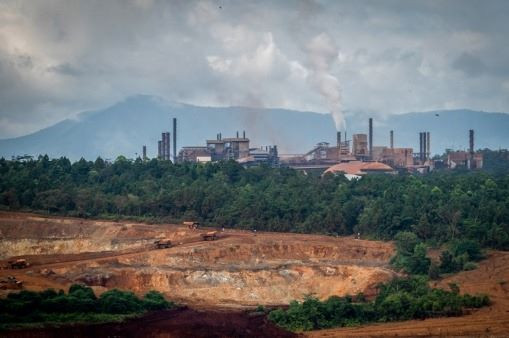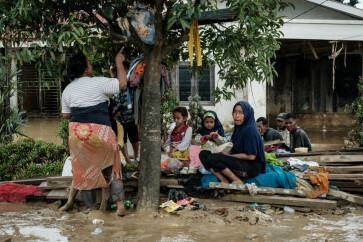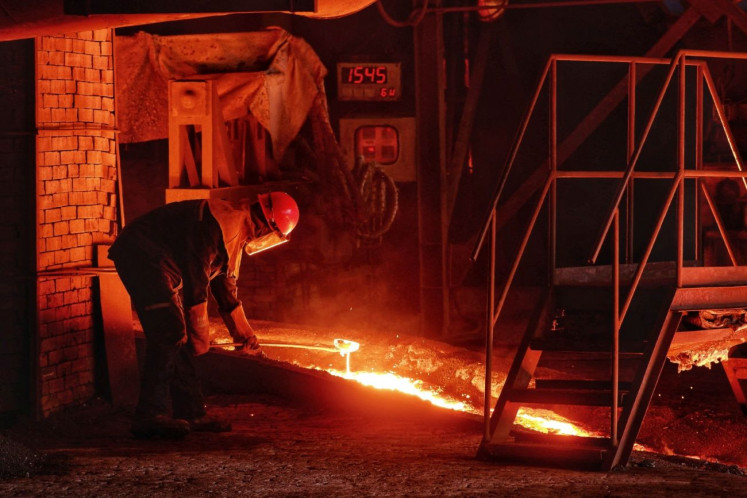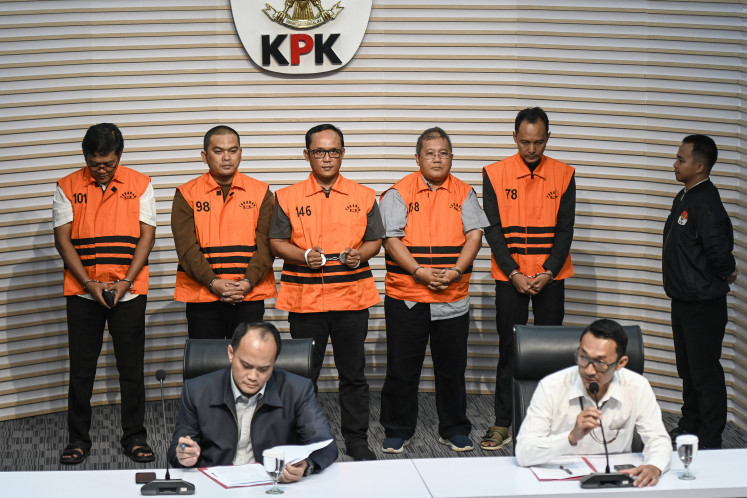Popular Reads
Top Results
Can't find what you're looking for?
View all search resultsPopular Reads
Top Results
Can't find what you're looking for?
View all search resultsWater and the growth of Indonesia’s mining sector
Mining companies often miss a simple step to protect the value of their operation through improving the management of their water assets.
Change text size
Gift Premium Articles
to Anyone
W
ater is not only a precious resource, but also an essential enabler for the economy. Indonesia’s burgeoning mining sector faces a pivotal opportunity to protect current and future value through good water management. If there’s ever a moment for business leaders to take note and cherish water, it’s now.
Today is World Water Day, and it’s been nearly 15 years since the United Nations General Assembly recognized the human right to safe and clean drinking water, and sanitation. For many of us, easy access to clean water may lure us into a diminished appreciation of how water is sourced, treated and transported.
In Indonesia, Government Regulation (PP) No. 30/2024 establishes the baseline for responsible water management in the country. Water resources are prioritized for people first, then agriculture, with commercial and industrial uses being given the lowest priority. These regulations are designed to prevent over-extraction and environmental degradation.
Yet, for industrial users, water’s value and management goes far beyond regulatory requirements. Indonesia’s rapidly growing mining sector accounts for 30 percent of Indonesia’s industrial water use. So, if there’s no water, there’s no mining.
In 2023, the mining sector grew to contribute 11.9 percent of Indonesia’s gross domestic product (GDP) and attracted US$4.7 billion in foreign direct investment. Indonesia’s mineral export ban in 2014 spurred significant capital investment into downstream metals processing facilities.
For example, before 2014, Indonesia only had two nickel smelters operating to process its high-quality nickel. By 2020 it totaled 13 in operation and then, by 2023, 43 were in operation with a further 28 under construction and 24 in planning.
As well as additional power, critical water infrastructure is required to sit alongside these smelters. Large volumes of water play a crucial role in cooling and temperature control, ore separation processes, dust suppression and waste treatment.
Since the mineral export ban in 2014, there has been a correlating increase in new major water projects (more than $1.7 billion across just five major water project investments) as part of the nation’s broader efforts to improve water infrastructure across domestic, industrial and agriculture uses.
Given water’s criticality and important shaping regulation like PP No. 30/2024, mining companies are investing directly in high-quality water infrastructure. These investments ensure water security for sustained production, underpin investment certainty, and enable efficient production processes while also meeting specific processing and environmental standards.
Certainly, we have seen an increase in demand for our water, renewable energy and other sustainable infrastructure solutions in Indonesia as well as neighboring countries like the Philippines.
Numerous responsible mining companies are getting ahead of water security concerns with innovative water management infrastructure investment, such as these publicly available examples: State-owned PT Vale Indonesia Tbk’s advanced water management system in South Sulawesi that includes water recycling and reuse facilities; and PT Borneo Alumina Indonesia’s integrated water management at the smelter grade alumina refinery in West Kalimantan that reduces surface water consumption, while ensuring the water used can be treated, recycled and returned to the environment.
These examples signal the growing appreciation of water’s role in sustainable mining operations. However, more needs to be done. After these initial investments, mining companies often miss a simple step to protect the value of their operation through improving the management of their water assets.
This is a huge opportunity for new and emerging mining companies in Indonesia, in particular, so that the value of the investments in water infrastructure is maximized and preserved for the country over the long term.
Without such follow-up, the impact on mining companies' bottom line is significant. Millions of dollars of operating profit can be lost through inefficient mining and production practices when water assets are deprioritized and left out of operational asset management programs. Why? Our experience is that the true value of water management and its impact on productivity is often misunderstood.
The reality is that the project design assumptions for water supply, dewatering and treatment assets often fall down in harsh operating conditions such as exposure to damage from heavy mining equipment, blasting, sediment entrainment and aggressive water chemistry. Water assets can also suffer from poor resourcing, lack of critical spares and simply being pushed further down the to-do list when more obvious operational issues hit.
The good news is that Indonesia’s water infrastructure investments are relatively new and the industry can act now to protect the value of these critical assets. Even small investments in water asset management programs can improve overall operational resiliency and significantly extend the operating life of water assets, where water management is understood as a critical process in the viability of the mine.
On this World Water Day, let’s elevate our appreciation of water. As we turn on taps and clean water flows to its balancing role in nature and critical role in growing our crops and supporting industry, water is truly our most valuable natural resource.
***
The writer is the solutions director for industrial water and mining at Black & Veatch. The views expressed are personal.











